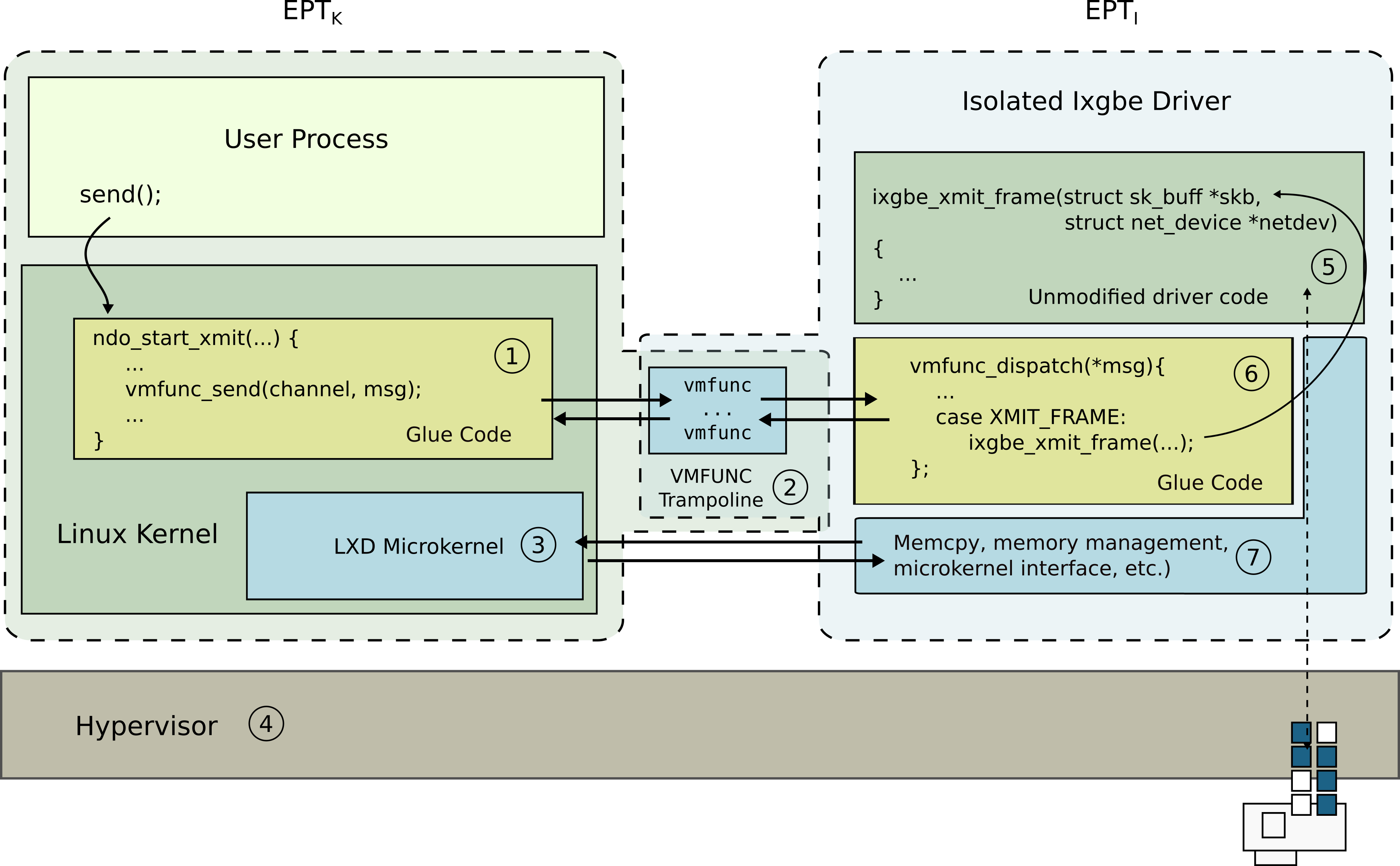
Today, the lack of isolation within an operating system kernel is one of the main factors undermining its security. While the core kernel is relatively stable, the number of kernel extensions and device drivers is growing with every hardware generation (a modern Linux kernel contains around 8,867 device drivers, with around 180-130 drivers running on a typical system). Developed by third-party vendors that often have an incomplete understanding of the kernel programming and security idioms, kernel extensions and device drivers are a primary source of vulnerabilities in the kernel. While modern kernels deploy a number of security mechanisms to protect their execution, e.g., stack canaries, address space randomization (ASLR), data execution prevention (DEP), superuser-mode execution (SMEP) and access (SMAP) prevention, a large fraction of vulnerabilities remain exploitable. Even advanced defense mechanisms like code pointer integrity (CPI) and safe stacks that are starting to make their way into the mainstream kernels remain subject to data-only attacks that become practical when combined with automated attack generation tools.
Why do we run monolithic kernels? The reason is twofold. First, for many years, isolation was prohibitively slow due to the lack of low-overhead architectural isolation mechanisms. For many years, monolithic kernels remained the only practical design choice for performance. Second, the complexity of a monolithic, shared-memory kernel prevents a trivial decomposition effort. Decomposition requires cutting through a number of tightly-connected, well-optimized subsystems that use rich interfaces and complex interaction patterns. Several attempts to decompose the kernel code failed due to a lack of proper abstractions and automation tools.
We work on a range of projects aimed at bringing practical low-overhead isolation to full-featured commodity kernels.
Lightweight Execution Domains: lxds
Lightweight Virtualized Domains: lvds
KSplit: ksplit
Publications
-
Anton Burtsev, Vikram Narayanan, Yongzhe Huang, Kaiming Huang, Gang Tan, and Trent Jaeger. Evolving Operating System Kernels Towards Secure Kernel-Driver Interfaces. In Proceedings of the 19th Workshop on Hot Topics in Operating Systems (HOTOS ‘23). June 2023.
-
Yongzhe Huang, Vikram Narayanan, David Detweiler, Kaiming Huang, Gang Tan, Trent Jaeger, and Anton Burtsev. KSplit: Automating Device Driver Isolation. In 16th USENIX Symposium on Operating Systems Design and Implementation (OSDI ‘22), July 2022. pdf
-
[Best paper award] Vikram Narayanan, Yongzhe Huang, Gang Tan, Trent Jaeger, and Anton Burtsev. Lightweight Kernel Isolation with Virtualization and VM Functions. In 16th ACM SIGPLAN/SIGOPS International Conference on Virtual Execution Environments (VEE 20), March 2020. pdf
-
Vikram Narayanan, Abhiram Balasubramanian, Charlie Jacobsen, Sarah Spall, Scott Bauer, Michael Quigley, Aftab Hussain, Abdullah Younis, Junjie Shen, Moinak Bhattacharyya, and Anton Burtsev. LXDs: Towards Isolation of Kernel Subsystems. In 2019 USENIX Annual Technical Conference (USENIX ATC 19), July 2019. pdf